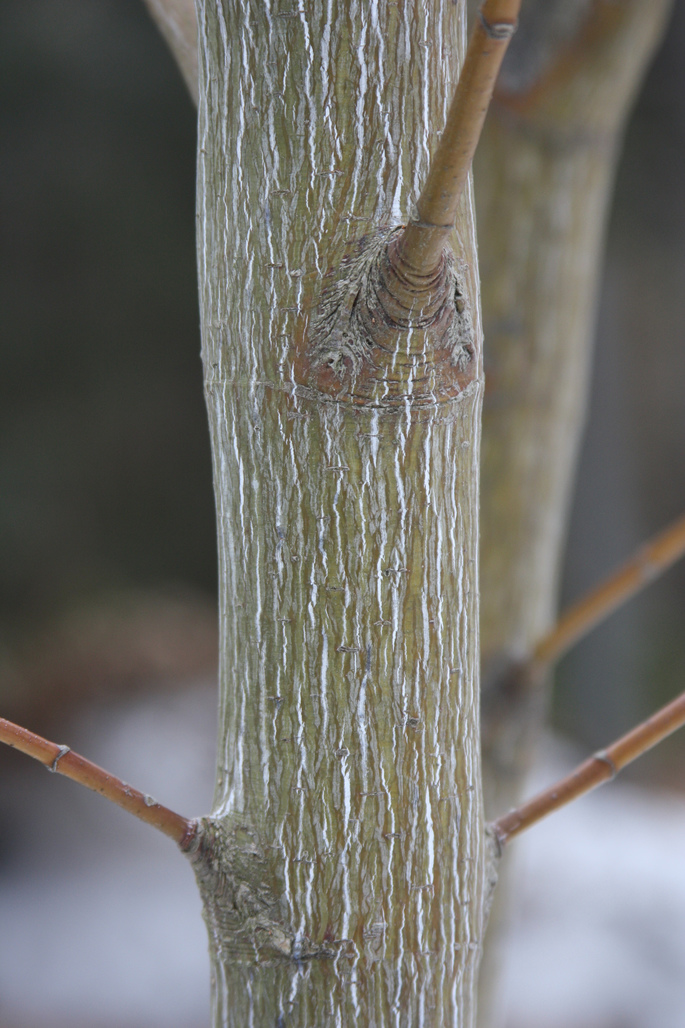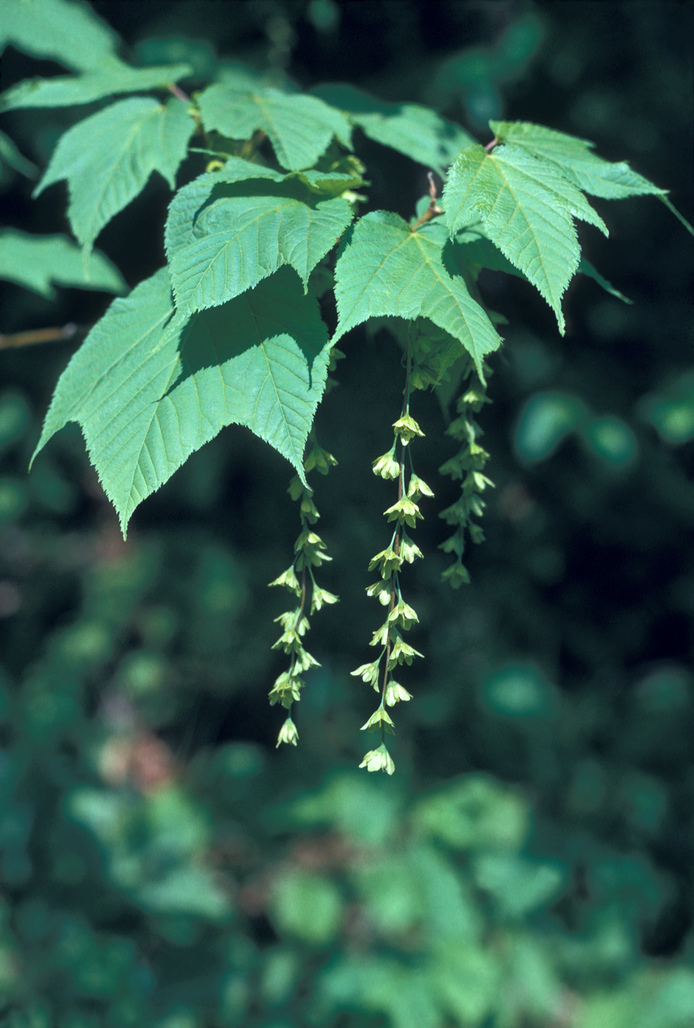General Description
Bloom Description: Flowers are discreet, and fall color is a clear yellow.
Growth Habit & Shape: Acer pensylvanicum is a short tree or tall shrub typically found in the wild growing among taller forest trees. It has interesting vertically-striped bark that can range from green with tan or yellow stripes to a deep purple-black with tan stripes. The leaves are broad and not deeply lobed.
Soil Preferences: Well-drained, acidic upland soils (as opposed to lowland soils, which would hold water more frequently).
Root Description: Shallow, fibrous, diffuse root system.
Garden Uses: Acer pensylvanicum is a nice specimen plant for the garden. Its short stature and interesting bark make it ideal for small spaces. It grows best in dappled shade.
Best Management & Maintenance: This small tree can be maintained as a shrub or tree. It can be slow to establish and prefers cool, upland sites with acidic soil. This plant will not tolerate hot, sunny locations, so find a place for it where shade will protect it from hot summer sun.
Common Problems: Abiotic: leaf scorch in full sun
Biotic: verticilium wilt, root rot, tar spot as is common among maples (the genus Acer)
Benefits
Ornamental Value: The striped bark and bright red buds provide lovely winter interest, and the yellow leaves are big and bright in fall.
Wildlife Benefits: Mammals that browse the twigs include snowshoe hare, porcupine, deer, red squirrel and moose. The tree is also known as moosewood. Chipmunks eat the seeds, and it is good nesting habitat for small birds such as warblers
Other Practical/Environmental Benefits: erosion control
Use in place of: -
Ecology
Habitat:
In the wild, grows primarily in cool, upland areas of acidic woodlands throughout New England and lower Canada.
Response to Disturbance: Does not tolerate a lot of disturbance. Cutting the plant can allow a more shrubby growth as it creates suckers fromt he cut stem. It does not want or need canopy opening and needs time to become well established.
Native State Distributions:
Canada: NB, NS, ON, PE, QC
USA: CT, DC, GA, KY, MA, MD, ME, MI, NC, NH, NJ, NY, OH, PA, RI, SC, TN, VA, VT, WI, WV
Wetland indicator status: FACU
References
Return to Top


